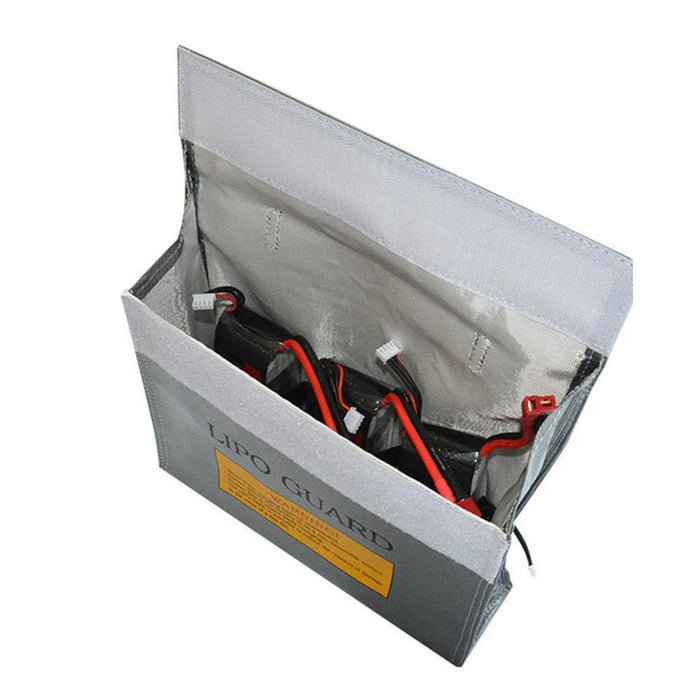
Correct Charging of a LiPo Battery
Lithium polymer batteries, better known as LiPo batteries, are a commonly used energy source in various applications such as drones, RC cars, and mobile devices. Their high energy density and light weight make them ideal for modern technology, but they require specific care to charge safely and efficiently. Here is a comprehensive guide on how to properly charge a LiPo battery.
1. Why special attention to LiPo batteries?
LiPo batteries are sensitive to overcharging, charging too quickly, and deeply discharging. When these situations occur, the batteries can overheat, swell in volume (also called "puffing"), or even catch fire. Therefore, it is essential to follow proper charging procedures to ensure both safety and battery life.
2. Use the correct charger
The first step in properly charging a LiPo battery is to use a LiPo-specific charger. These chargers are designed to work with the unique chemical composition of LiPo batteries and provide the necessary safety measures. Avoid universal chargers or chargers not explicitly designed for LiPos as these increase the risk of overcharging or incorrect charging settings.
Features of a good LiPo charger:
- Balancing function: This charges each cell in the battery individually to an equal level, which is essential for safe operation.
- Charge current setting: This function lets you control the charging current based on the battery's specifications.
- Automatic stop function: The charger stops charging once the battery is fully charged to prevent overcharging.
You can find our chargers here .
3. Setting the correct charging parameters
LiPo batteries must be charged in a constant current (CC) / constant voltage (CV) manner. This means that the charger starts at a constant current until the battery is almost fully charged, then switches to a constant voltage until full charge is reached.
a. Set the correct charging current
The standard charging current for LiPo batteries is equal to 1C. The value "C" represents the capacity of the battery. For example, if you have a 2200mAh LiPo, 1C means you need to charge it at 2.2A (2200mAh = 2.2A). A slower charging current, such as 0.5C (1.1A for a 2200mAh battery), extends battery life. Never charge with a higher current than 1C, unless the battery explicitly indicates that fast charging is possible.
b. Check correct voltage
The nominal cell voltage of a LiPo is 3.7V, and the maximum safe voltage per cell is 4.2V. So a battery with multiple cells (such as a 3S battery) has a total voltage of 12.6V (3 x 4.2V). Make sure you set the charger to the correct voltage for the number of cells in your battery (1S, 2S, 3S, etc.).
| Batterijtype | Number of cells | Maximum voltage |
|---|---|---|
| 1S | 1 | 4.2V |
| 2S | 2 | 8.4V |
| 3S | 3 | 12.6V |
| 4S | 4 | 16.8V |
4. Balancing the battery

Each LiPo battery consists of multiple cells that can individually vary in voltage as they are used. A balancer ensures that all cells have the same voltage during charging. This prevents some cells from overcharging, which can lead to damage or even a fire hazard. Many modern chargers have a built-in balancing function, but you'll want to make sure you also connect the battery's balancing cable to the charger.
5. Use a fire-safe charging location

It is always wise to charge LiPo batteries in a fire-resistant environment, for example in a special LiPo bag. These bags are made of heat-resistant material and provide an extra layer of protection in case the battery overheats or ignites. Avoid charging LiPo batteries near flammable materials and never leave them unattended.
Here you can find all our LiPo bags.
6. Avoid overcharging and deep discharging
One of the most important points of attention with LiPo batteries is to avoid overcharging and deep discharging. Overcharging (more than 4.2V per cell) can cause battery swelling or explosion. On the other hand, deep discharge (below 3.0V per cell) can permanently damage the battery, resulting in reduced capacity or complete battery failure.
7. What to do in case of a defective battery?
If you notice that a battery is swelling, damaged, or not charging properly, replace it immediately. Swollen batteries are a sign of internal damage, which can pose a major safety risk. Do not use or recharge such batteries, and be sure to recycle them properly.
8. Safety precautions after loading
After the battery is fully charged:
- Allow the battery to cool down before using it.
- Store LiPo batteries in a cool, dry place and preferably in a semi-charged state (approximately 3.8V per cell) when not in use for long periods of time.
